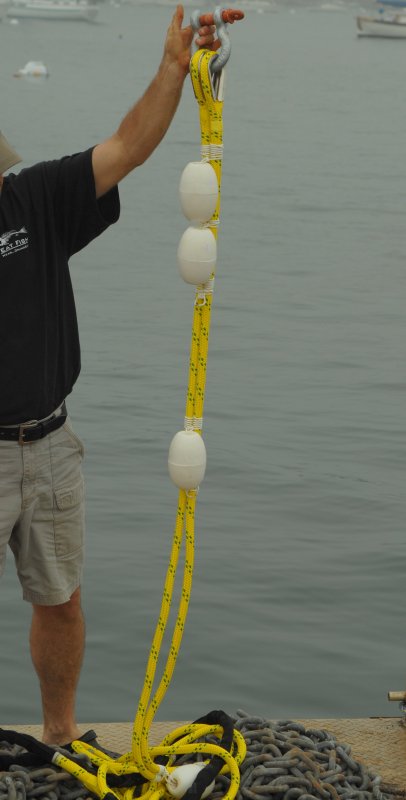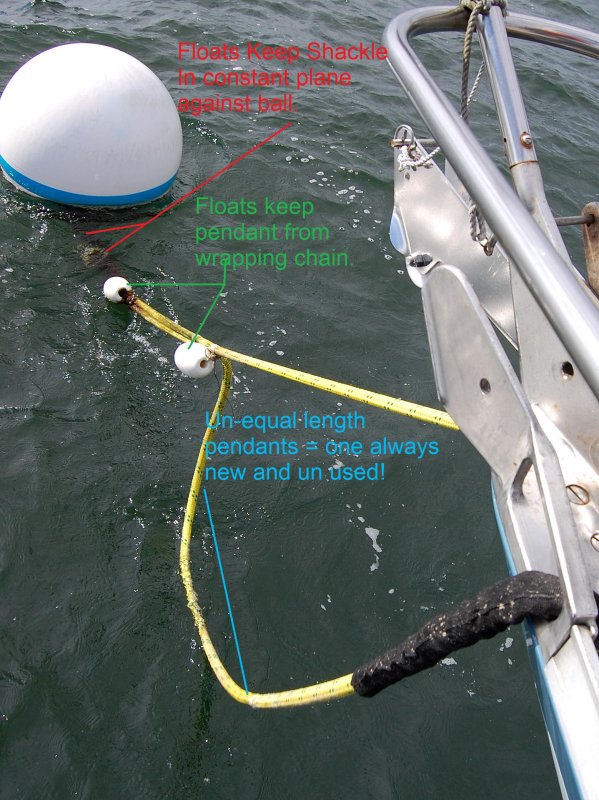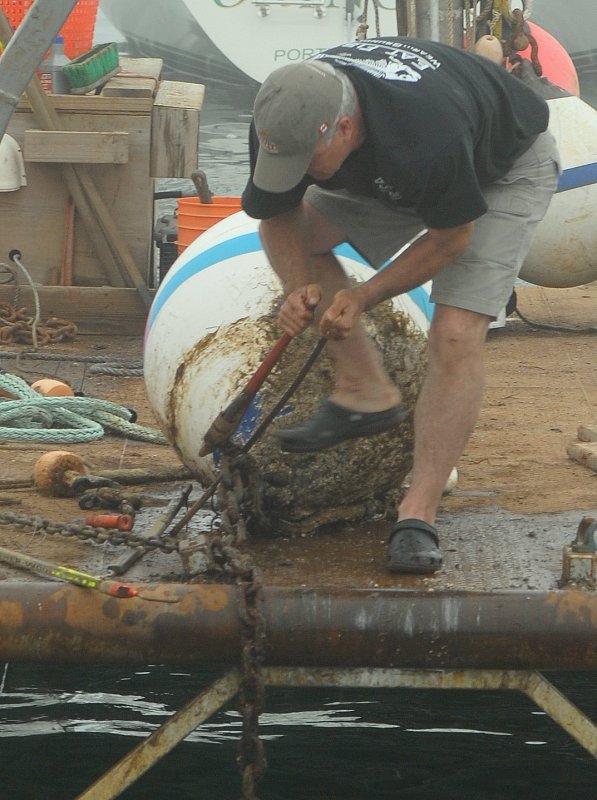Hello All,
With the sailing season just around the corner I am in the process of setting up our mooring system for the year. In the past years I have used the system my club has provided, but I am not particularly satisfied with it.
Past setup: Two 12ft, 3-strand 3/4" mooring pendants shackled below the mooring ball. The problems: Its not possible to have two galvanized eye-spliced pendants lay nicely together and not chafe. Metal-on-metal chafing is evident. The other issue with the setup is during no wind, change of tide, etc. the boat will float around and over the mooring ball regularly wrapping the pendants up, around and over the ball. Freeing it up can be a real PITA, especially with marine growth and a good breeze.
I have taken to whipping the two pendants together from the mooring end to about mid-way with 3/16" cord and hanging fishing floats all in an effort to keep the pendants from wrapping up. It works, mostly.
New setup idea: Heavy 1/2inch mooring chain running through the mooring ball with a large shackle on top of the ball to attach to the pendant(s). The problem of having two large shackles lay nicely is still an issue with the top attachment point. I should think the pendants will have an easier time staying free of the mooring chain.
Lastly I am considering using a "Y" mooring pendant instead of two independent pendants. Why? Well the single shackle will attach cleanly to the top of the mooring ball with far less chafe than the two that currently fight each other. I am currently trying to figure out the best way to make this splice.
FWIW, this is sadly the last season on a mooring. My club is loosing its moorings to a new dock expansion. Since next season I will be forced into a slip I don't really want to spend very much setting up the mooring. Any input on the subject would be appreciated. TIA, RT
With the sailing season just around the corner I am in the process of setting up our mooring system for the year. In the past years I have used the system my club has provided, but I am not particularly satisfied with it.
Past setup: Two 12ft, 3-strand 3/4" mooring pendants shackled below the mooring ball. The problems: Its not possible to have two galvanized eye-spliced pendants lay nicely together and not chafe. Metal-on-metal chafing is evident. The other issue with the setup is during no wind, change of tide, etc. the boat will float around and over the mooring ball regularly wrapping the pendants up, around and over the ball. Freeing it up can be a real PITA, especially with marine growth and a good breeze.
I have taken to whipping the two pendants together from the mooring end to about mid-way with 3/16" cord and hanging fishing floats all in an effort to keep the pendants from wrapping up. It works, mostly.
New setup idea: Heavy 1/2inch mooring chain running through the mooring ball with a large shackle on top of the ball to attach to the pendant(s). The problem of having two large shackles lay nicely is still an issue with the top attachment point. I should think the pendants will have an easier time staying free of the mooring chain.
Lastly I am considering using a "Y" mooring pendant instead of two independent pendants. Why? Well the single shackle will attach cleanly to the top of the mooring ball with far less chafe than the two that currently fight each other. I am currently trying to figure out the best way to make this splice.
FWIW, this is sadly the last season on a mooring. My club is loosing its moorings to a new dock expansion. Since next season I will be forced into a slip I don't really want to spend very much setting up the mooring. Any input on the subject would be appreciated. TIA, RT
Last edited:









